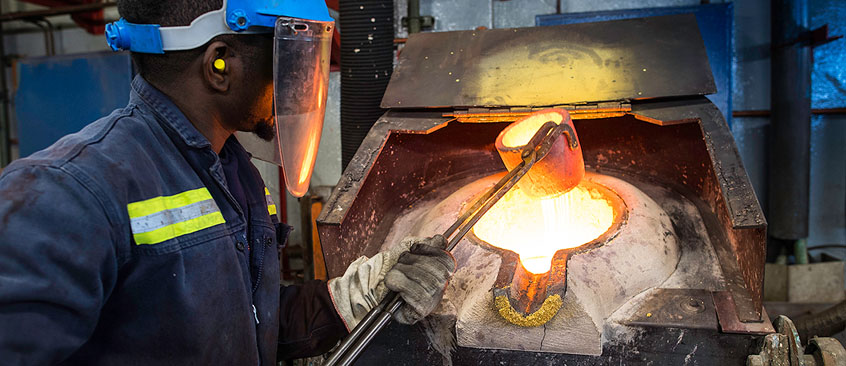The Rand Refinery is the largest refinery in the world. It is located in Germiston, South Africa, and refines more than 200 tons of gold every year. With the gold price soaring, the refinery grew bigger and bigger to become one of the most important refineries in the world. The refinery’s history dates back more than 100 years, to the time of the gold rush in Africa. But even as gold became rare in Africa and production slowed, the Rand Refinery persisted and has since earned a reputation as the world’s largest refinery. No refinery before it has ever processed as much gold as the Rand Refinery.

History of The Rand Refinery
The story of the Rand Refinery begins shortly after the First World War. At that time, miners in Africa had to pay high fees to have their gold refined. It was particularly expensive in the South because the gold mined in South Africa had to be taken by ship to London to be refined. It wasn’t long before people protested and demanded a change, so the Chamber of Mines made plans to build a refinery in Africa. The British were concerned that they would lose their influence and profit from African gold and even considered refining it for free. However, this did not change the miners’ minds, and construction of the Rand Refinery began in 1920. The location of the refinery was carefully chosen, but in the end, the company decided to build it in Germiston for two reasons: first, there was a railroad station there, which would make transportation much easier. And second, Germiston is located in the Witwatersrand mining region, which is also very advantageous. After 16 months of construction, the Rand refinery was finally opened. Not everyone was happy about this development because the British (especially the two largest English refining companies, Rothschild, and Johnson Matthey) felt that the Rand refinery would be detrimental. The miners in Africa, on the other hand, were delighted.
Five years after the Rand refinery was built, the SARB (South African Reserve Bank) began buying gold from the mines through the Rand refinery. This not only helped the Rand Refinery but also had a positive effect on the gold market. Over the next fifty years, more and more gold was discovered in Africa, especially in the Witwatersrand and Johannesburg areas, both not far from the Rand Refinery. Then in 1971, the African gold rush reached its peak, with over 1000 tons of gold mined that year.
Over the years, the Rand Refinery underwent many changes. In 1976, the first Krugerrand blanks were produced, and in 1889, Rand Refinery opened a new division that enabled the production of 400-ounce gold bars. And in 2008, a project to speed up production became successful. Robots took over some of the tasks that originally had to be done by humans (today, over 500 people work at the Rand Refinery). It’s amazing the impact the Rand Refinery has had and continues to have, not only on Africa but on the entire world. Almost 30% of the gold ever mined was processed at the Rand Refinery.
More about this exciting refinery: https://www.randrefinery.com/
What does the Rand Refinery refine?
The Rand Refinery refines all sorts of things from the gold it receives every day. From coins to gold bars, gold nuggets, from medallions to blanks or dental gold. The most famous coin that the Rand Refinery produces is probably the Krugerrand. This particular gold coin was introduced in 1967 (July 3) and continues to grow in popularity not only in Africa but around the world. In just ten years, over 20 million Krugerrands have been sold in the US alone. The Krugerrand coin got its name because it depicts the face of Paul Kruger (State President of the South African Republic from 1883-1902). It also inspired other countries to mint special bullion coins: Australia, America, China, and Great Britain. In 1980 it was available in three sizes, and since its first minting, 50 million ounces of Krugerrand have been sold worldwide.
50 years after the introduction of the Krugerrand, the first silver and platinum coins came out, the Krugerrand was no longer just a gold coin. Also worth mentioning are the Rand Refinery gold bars, which come in all sizes from 10 grams to 400 ounces. Some of the Rand Refinery gold bars include the Corporate, the Elephant, and the Mirage. However, Rand Refinery not only produces gold bars, but also a variety of different silver bars. Among the most popular is the Year of the Snake, the African Elephant, and the Year of the Horse.
The Rand Refinery is not only the largest refinery in the world but also a piece of African history. And although much has changed since the refinery opened in 1920, its purpose has remained the same: to convert raw metal into beautiful and pure coins, bars, etc.